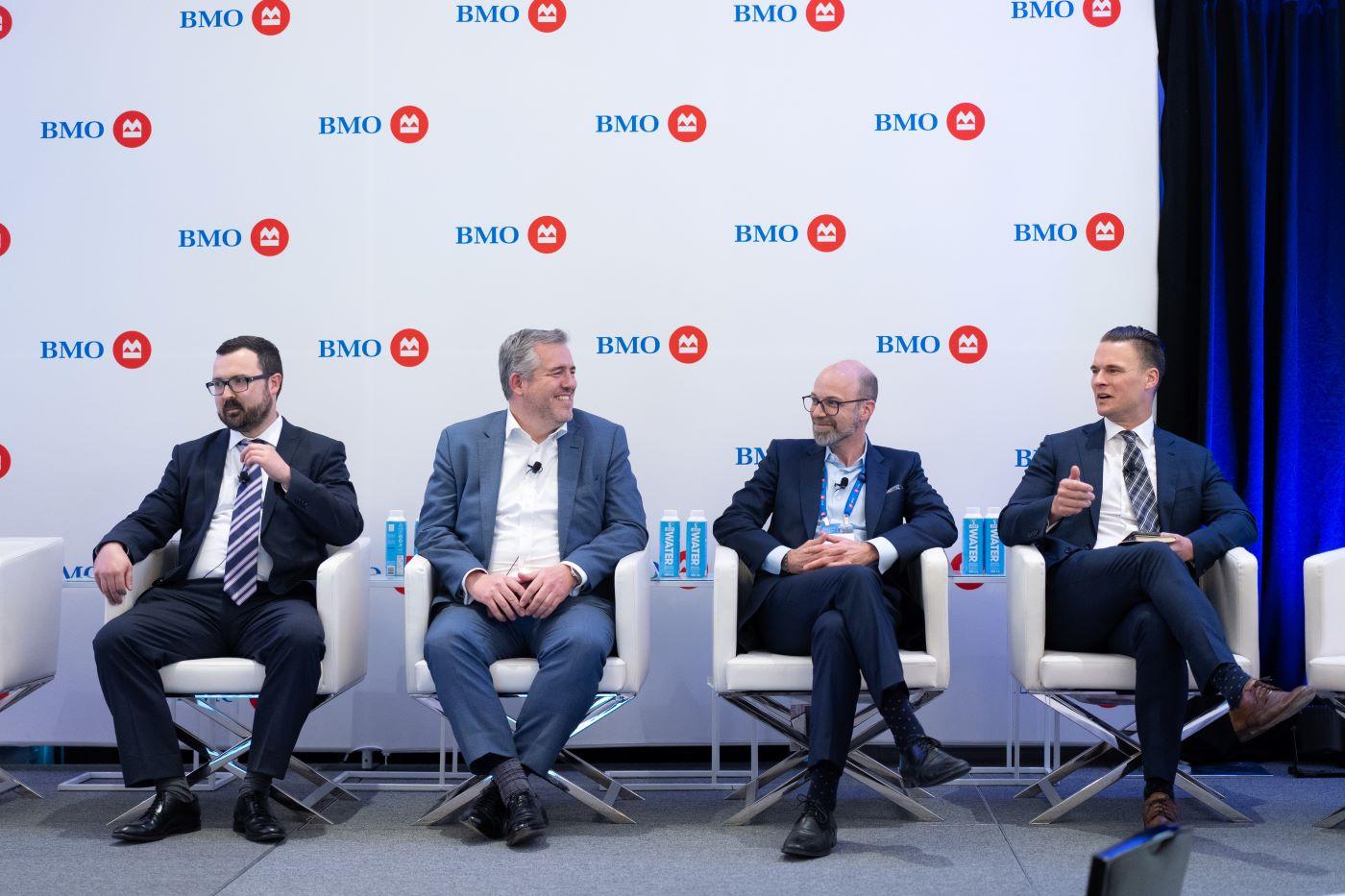The energy transition won’t be solved by investing in technological solutions alone; it will also require a combination of government incentives and public-private partnerships.
To avoid the worst impacts of climate change, global investment in clean energy must increase significantly. Globally, investments into companies focused on energy transition totaled around US$1.8 trillion in 2023, but that’s well short of the estimated US$10 trillion a year needed to achieve net zero by 2050.
The investments necessary to accelerate the energy transition were the focus of the “Energy Transition” panel that I moderated at the 2024 BMO Government, Reserve and Asset Managers Conference. The panel featured:
Alin Charrière, Senior Analyst, Debt Management, Department of Finance Canada
Eusebio Garre, Director & Head of Funding, IDB Invest
Maxime Aucoin, Executive Vice President, Strategy & Finance, Hydro-Québec

Increasing capacity through diversity
When Maxime Aucoin became Executive Vice President, Strategy & Finance at Hydro-Québec last year, he set out to answer a simple question: what will it take for his organization and the Province of Quebec to achieve net zero? The electricity supplier already had a significant cost advantage because most of its 40 gigawatts of installed capacity were built before 1990.
“When you take a step back, you realize that even with that advantage, 50% of the energy consumed in the province is fossil-fuelled,” Aucoin said. “If you believe electrification is the way to get to net zero, then you realize that demand for green electricity has to increase significantly. We estimate that it’s going to basically double over the next 25 years.”
This presents the company with a dual challenge: service its existing network while essentially growing its capacity over the next 25 years. To meet this goal, Hydro-Québec is taking a diversified approach, focusing on energy efficiency by managing peak demand, investing in wind power and improving its existing hydro assets while building more. A third of the $150 billion required over the next decade should come from existing cash flows, while two thirds will be financed through capital markets.
“Our existing bond program will continue to be our main access to markets over the coming years, as we see increasing demand for green and liquid infrastructure such as ours,” he said. “It’s tens of projects that will come online over the next 10 to 12 years. We see a slow ramp: we’ll be moving from, say $5 billion a year in financing to double digits over the next decade.”
Financing the energy transition
To help finance the transition, the federal government issued a CA$5-billion green bond in 2022, the largest in the country’s history at the time. The government updated its Green Bond Framework in late 2023 to include, among other things, nuclear energy and issued a CA$4-billion green bond earlier this year.
The government is helping the energy transition in other ways, such as using incentives to get more electric vehicles in the driveways of Canadian consumers, according to Finance Canada’s Alin Charrière. Ottawa is also investing in clean, public transportation to help reduce our reliance on fossil fuels.
The private sector can play a prominent role
Other areas of the world have also made progress when it comes to energy transition, said IDB Invest’s Eusebio Garre. The multilateral bank, which promotes the development of economies in Latin America and the Caribbean through the private sector, has a balance sheet with US$11 billion in assets. IDB Invest’s shareholders just approved a US$3.5 billion capital increase that will raise their funding program to US$5 billion to US$6 billion a year by 2031, up from US$2.5 billion.
The region is facing some of its own challenges because the hydroelectric power that is a big component of those green grids is vulnerable to the effects of climate change. Less rain means less water to power those plants, forcing countries in the region to diversify their energy mix. This is where the private sector has been able to lend a hand.
Blue bonds
Climate risk is also generating a lot of investment interest in another new area of finance – blue bonds. These investments are water-positive or water-adjacent-positive, which includes low-carbon maritime fuels and desalination projects.
IDB Invest has already issued two blue bonds that focus on cleaning up the oceans and promoting economic opportunities such as offshore renewable energy and the decarbonization of shipping.
"The oceans are huge for our region, especially for Caribbean countries,” he said. “They are huge for the world, but it is felt more heavily when you’re really dependent on it on a day-to-day basis.” He highlighted that the blue economy is not only about cleaning up the oceans, but also promoting economic opportunities such as offshore renewable energy, decarbonizing shipping, and supporting upstream initiatives that target pollution from packing waste.
IDB Invest has already issued two blue bonds that finance projects seizing these opportunities.
As part of the IDB Group, IDB Invest shares private sector client feedback with the Inter-American Development Bank (IDB), which works with governments to help ensure the right regulations are in place to protect the environment and move the economy.
“We work with companies to make those changes happen,” he said. “Climate goals cannot be achieved by government action alone.”
Investments in these changes are happening in real-time, but the pace will need to accelerate to meet our net-zero ambitions.
